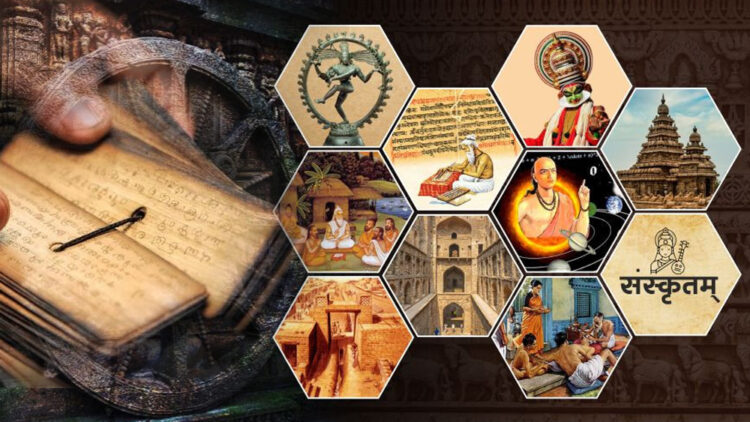Modern medicine, with its advanced technologies and evidence-based methods, is often seen as a product of recent centuries. Yet, its foundation was laid thousands of years ago through traditional knowledge systems developed across different civilizations. From herbal pharmacology and surgical techniques to preventive care and psychological healing, ancient medical wisdom continues to influence how we understand and treat diseases today. The journey of modern medicine is, in many ways, a story of rediscovering and refining practices that traditional healers understood through observation, experimentation, and cultural transmission.
Roots of Medical Knowledge in Ancient Civilizations
Long before laboratories and microscopes, early civilizations learned to diagnose and heal by closely observing nature and the human body. The Egyptians, for instance, developed surgical instruments and described various diseases in the Ebers Papyrus — one of the oldest medical texts in history. In ancient Greece, Hippocrates emphasized natural causes of illness rather than supernatural ones, setting the stage for rational medicine. Meanwhile, Indian and Chinese scholars built vast medical systems — Ayurveda and Traditional Chinese Medicine (TCM) — both emphasizing balance, diet, and holistic healing. These traditions provided the philosophical and practical groundwork for modern medical science.
Herbal Medicine: The First Pharmacology
The earliest medicines came not from factories but from forests and fields. Herbal remedies form the backbone of most traditional health systems, and many of today’s drugs trace their origins to these natural compounds. For example, the painkiller aspirin is derived from willow bark, which was used in ancient Egypt and Greece to treat fever and pain. Quinine, the first effective treatment for malaria, was extracted from the bark of the cinchona tree — used by Indigenous South Americans for centuries. Even morphine, a key pain-relief drug, comes from the opium poppy, long cultivated for medicinal use. Traditional healers’ keen knowledge of plants and their effects served as an early form of pharmacological research.
Ayurveda and Holistic Health Principles
Originating over 3,000 years ago in India, Ayurveda remains one of the most comprehensive traditional medical systems. It views health as the balance of three fundamental energies, or doshas — Vata, Pitta, and Kapha. Disease occurs when these energies are imbalanced. Ayurveda’s emphasis on personalized treatment, detoxification, and preventive care parallels modern medicine’s growing focus on individualized healthcare and lifestyle medicine. Practices such as yoga, meditation, and herbal therapy have been scientifically validated for improving cardiovascular health, reducing stress, and enhancing immunity. Modern integrative medicine increasingly borrows from Ayurvedic principles to promote overall wellness rather than merely treating symptoms.
Traditional Chinese Medicine and the Concept of Energy Flow
Traditional Chinese Medicine (TCM) is another ancient system that deeply influenced modern therapeutic approaches. Built on the concept of Qi — the life energy — and the dynamic balance of Yin and Yang, TCM includes acupuncture, herbal formulations, and tai chi. Acupuncture, once viewed skeptically, is now widely accepted in hospitals and clinics worldwide for pain relief and rehabilitation. Studies show it triggers the release of endorphins and activates the body’s natural healing mechanisms. The TCM principle of treating the root cause, not just the symptoms, has inspired preventive and holistic care models in modern healthcare.
Indigenous and African Healing Wisdom
Across Africa, Asia, and the Americas, Indigenous healers developed medical systems rooted in local ecology and spirituality. African traditional medicine relies heavily on plants, spiritual balance, and communal healing. Many modern pharmaceuticals, including anti-inflammatory and antimicrobial agents, originate from plants used by African healers. In Native American traditions, plants like echinacea and sage were used to boost immunity and respiratory health — both of which are now studied in biomedical research. These systems highlight an understanding of health that integrates body, mind, spirit, and community — a perspective increasingly valued in modern psychosomatic medicine.
Table: Traditional Practices and Their Modern Scientific Applications
| Traditional Knowledge Source | Ancient Practice | Modern Medical Application |
|---|---|---|
| Ayurveda (India) | Herbal therapy, yoga, detoxification | Integrative medicine, stress management, gut health |
| Traditional Chinese Medicine | Acupuncture, Qi balance | Pain management, immune support, rehabilitation therapy |
| African Traditional Healing | Herbal and spiritual medicine | Drug discovery, antimicrobial treatments |
| Indigenous American Medicine | Echinacea, sweat lodges | Immune boosters, holistic therapy |
| Greek and Egyptian Medicine | Surgery, herbal tonics | Modern surgical instruments and pharmaceuticals |
The Birth of Surgery and Anatomy from Traditional Practices
The study of anatomy and surgical methods has ancient origins. Egyptian physicians were among the first to practice organized surgery and document internal anatomy. In India, the surgeon Sushruta, known as the “Father of Surgery,” described detailed procedures including cataract extraction and plastic reconstruction around 600 BCE. His text, Sushruta Samhita, outlined principles of cleanliness, anesthesia, and wound care — centuries before modern antiseptic surgery. Greek medicine later refined these ideas, and Renaissance Europe revived them through dissection and anatomical studies, laying the groundwork for modern surgical science.
The Transition from Herbal Remedies to Laboratory Medicine
As chemistry and microbiology advanced in the 18th and 19th centuries, scientists began isolating active compounds from traditional herbs. This process marked the birth of pharmacology. Morphine, quinine, and digitalis were among the first isolated drugs, followed by the discovery of antibiotics like penicillin. However, the knowledge of where to look for these compounds often came from traditional healers. Even today, more than 25% of modern medicines are derived from plants traditionally used for healing. Pharmaceutical researchers continue to study ethnobotanical knowledge to discover new treatments for cancer, diabetes, and infectious diseases.
Mind-Body Medicine: The Scientific Validation of Ancient Wisdom
Modern psychology and neuroscience increasingly support what ancient healers long understood — that the mind and body are deeply interconnected. Practices like meditation, prayer, and breathing exercises, once considered purely spiritual, are now recognized for their role in reducing stress hormones and improving mental health. The placebo effect, for instance, highlights how belief and expectation can influence physical recovery, echoing the psychosomatic principles found in many traditional healing rituals. This convergence of science and spirituality represents a revival of holistic medicine in contemporary healthcare.
Modern Integration: Combining Traditional and Contemporary Medicine
Today, integrative medicine aims to bridge the gap between ancient wisdom and modern science. Hospitals in countries like India, China, and Japan incorporate traditional therapies alongside conventional treatments for chronic diseases, rehabilitation, and mental wellness. The World Health Organization supports using safe traditional remedies as part of primary healthcare, recognizing their cultural importance and therapeutic value. The challenge lies in balancing scientific validation with respect for cultural heritage. When traditional knowledge is combined with modern research, it creates a more complete and sustainable medical model.
FAQs
1. What role did traditional medicine play in the development of modern pharmacology?
Traditional healers identified thousands of plants with medicinal properties through observation and experimentation. These discoveries formed the foundation of modern pharmacology, which later isolated active compounds for targeted treatments.
2. Why is traditional medicine still relevant today?
Because it offers holistic approaches that address the root causes of illness, emphasizing prevention, lifestyle, and mental health — areas modern medicine sometimes overlooks.
3. Can traditional and modern medicine work together safely?
Yes. When traditional practices are scientifically studied and regulated, they can complement modern treatments, leading to more effective and culturally sensitive healthcare systems.



